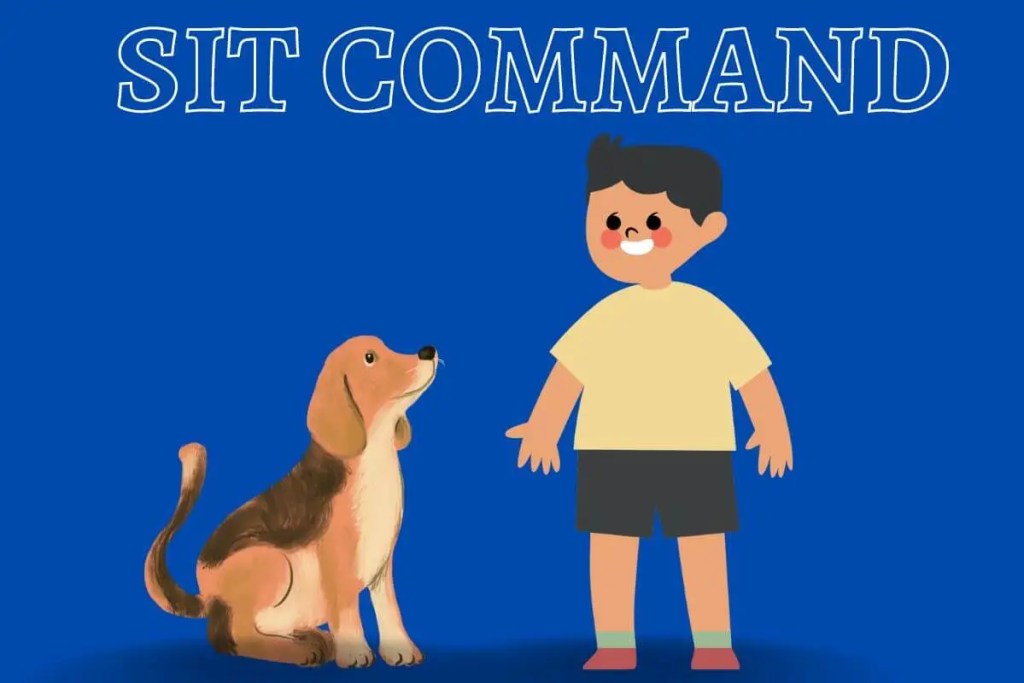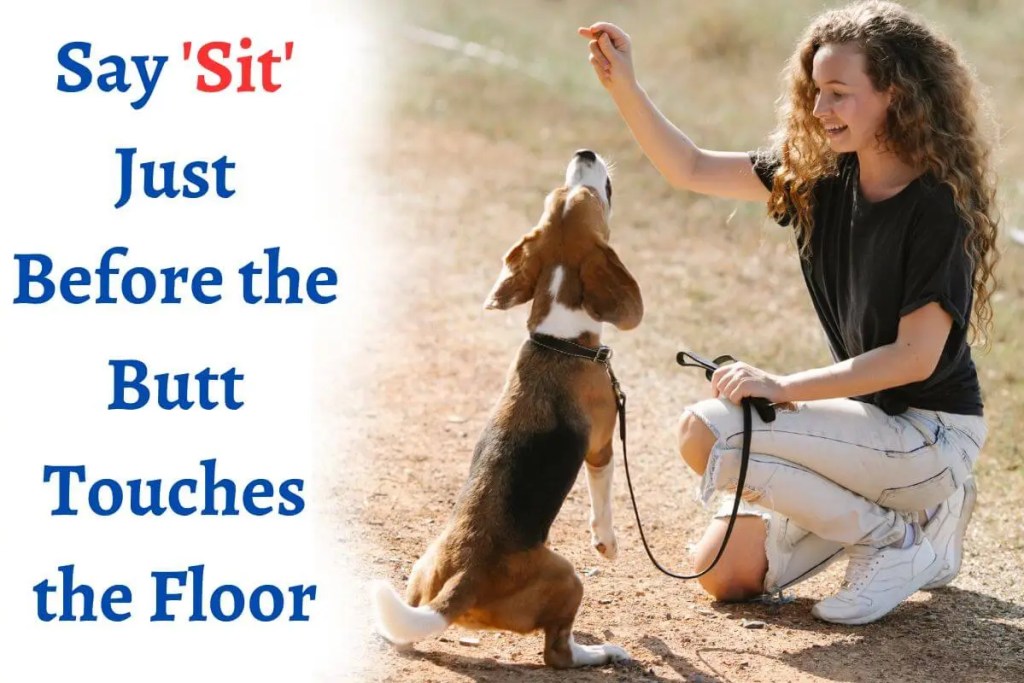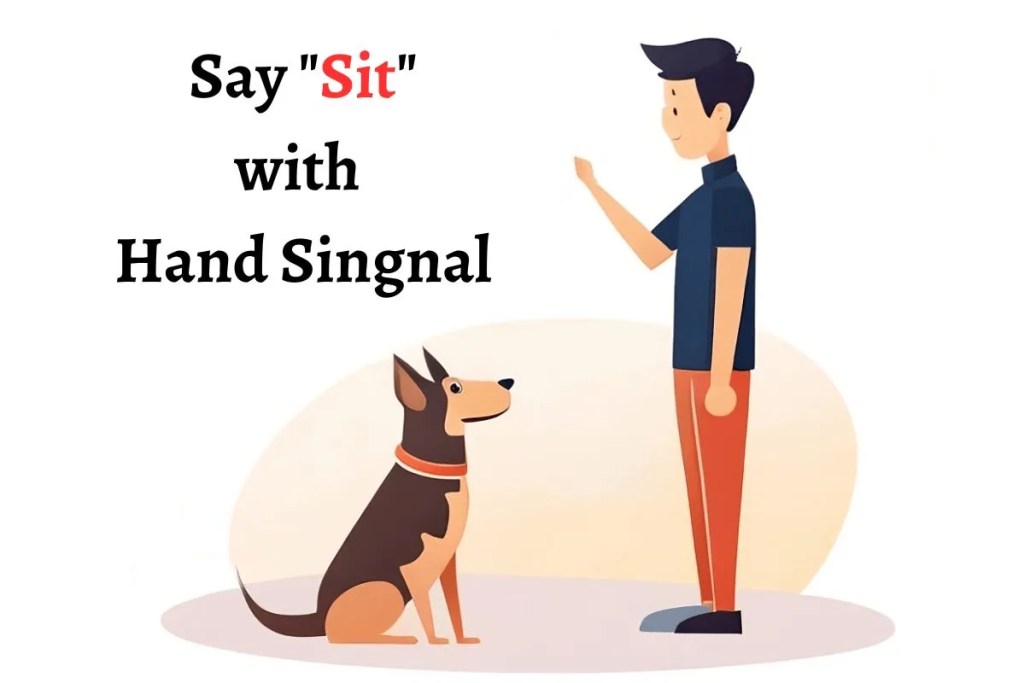Teaching your dog to sit is a basic command in the “Obedience” category. It establishes a level of trust and respect between you and your four-legged companion.
When your dog learns to sit, it shows that they are willing to follow your lead and reinforces your role as the leader.
Additionally, the “sit command” can be extremely useful in various situations, such as during mealtime, when guests arrive, or when crossing a busy street.

Before you start the dog training to sit, the following tools are necessary:
- Treats: Choose a small treat or a training treats. Your dog’s favorite treat is preferable.
- Clicker (optional): A clicker signals the precise moment your dog accomplishes the desired behavior. If you do not use a clicker, you can use words like ‘YES,’ ‘GOOD,’ or ‘NICE’ as alternatives
Related: Learn Clicker Training for Dogs
Select a quiet and distraction-free area for training sessions. This could be a room in your house or a fenced yard. Minimize external noises and potential interruptions, as they distract your dog and make it challenging to focus on the training.
To maintain your dog’s focus and prevent them from becoming overwhelmed, start with short training sessions lasting around 5-10 minutes.
It’s best to start the training process as early as possible, ideally when your dog is still a puppy.
Puppies have a natural eagerness to learn, making it easier to teach them new commands. However, older dogs can also be trained to sit successfully with the right approach. By following DogHIB’s step-by-step process for teaching your dog to sit, you’ll be on your way to having a well-behaved and obedient dog.
4 Steps to Train a Dog to Sit
Step 1: Treat Lure

Start with a treat lure to get your dog to sit. Make sure you have lots of small treats in your pockets.
To begin, hold a treat in your hand, close to your dog’s nose, and slowly move it upward and slightly backward over their head.
Your dog’s natural inclination will be to follow the treat, causing them to lower their rear end into a sitting position. As soon as their bottom touches the ground, use a clicker to mark the behavior and provide the treat as a reward.
What if the Dog Doesn’t Sit and Keeps Moving Toward the Food or Treat?
If your dog jumps up or moves toward the treat instead of sitting, avoid giving treats to them. Patiently wait for them to sit. Once they sit, reward their obedience by delivering the treat.
Pro Tip: Hold the treat at a low height or near the dog’s nose to prevent your dog from jumping up to grab it.
Step 2: Adding Verbal Cue “Sit” Command
Continue using the treat to guide your dog into the sitting position as before. Keep practicing until your dog sits successfully 9 out of 10 times with the treat. Once your dog reaches this level, introduce the word “Sit” as a verbal cue.
Say the word “Sit” just before you lure your dog into the sitting position.

This helps your dog associate the word with the action. Consistently using the same verbal cue reinforces the connection and makes it easier for your dog to understand what you expect from them.
Pro Tip: Mark the behavior with “yes” or the clicker, followed by a treat as a reward.
Step 3: Reinforcing the Behavior
Once your dog understands the association between the verbal cue and sitting, you can start reinforcing the behavior and gradually reduce the dependence on luring.
Begin to use a hand gesture or signal alongside the verbal cue to reinforce the behavior.
For example, you can raise your hand with a flat palm facing up when saying “Sit.” The hand signal will eventually serve as a visual cue for your dog to sit, even without the verbal command.

After using the verbal cue and hand signal, wait a couple of seconds to see if your dog sits on their own.
If they do, mark the behavior with “yes” or the clicker and reward them with a treat. If they don’t, repeat the process.
Over time, your dog will start to understand the command and sit without the need for luring.
After this, you can increase the time between the cue and the reward. It encourages your puppy to maintain the sitting position for longer periods.
Professional Dog Trainer Tip: Practice the “sit” command in various locations and situations to help your dog generalize the behavior. Start in familiar environments, then gradually introduce distractions or training in new places. By practicing in different contexts, your dog will learn to respond to the command regardless of the surroundings.
Step 4: Practice and Consistency
Incorporate the “Sit” command into your daily routines. For example, ask your dog to sit before mealtime, before opening the door for a walk, or before receiving a toy or treat.
By consistently integrating the command into everyday activities, you reinforce the behavior and ensure that your dog understands it in various contexts.
Pro Tip: Even if your dog becomes skilled at the “Sit” command, giving them occasional treats and praise will help them stay enthusiastic and obedient.
For a visual demonstration of teaching a dog to sit, watch the embedded video below from AKC:
After watching the video demonstration, you may feel more equipped to teach your dog to sit effectively. However, if you’re struggling to teach your puppy to sit, then one common reason can be a lack of focus or distractions in the environment.
Puppies are naturally curious and easily distracted by new sights, sounds, and smells.
Another reason could be that your puppy hasn’t fully grasped the concept of the command yet. Each dog learns at their own pace, and it’s essential to be patient and provide consistent training.
Never Punish your dog for not learning the sit command quickly. Adjust your approach if necessary, and always end each training session on a positive note. Also never force your dog to sit for longer periods as they can cause health problems.
We hope this guide has been helpful to you. If you have any questions or need further assistance, please feel free to leave a comment below. Don’t forget to share this article with other dog owners who may find it useful.
Related: How to Teach a Dog to Lay Down
Related: How to Teach a Dog to Stay




